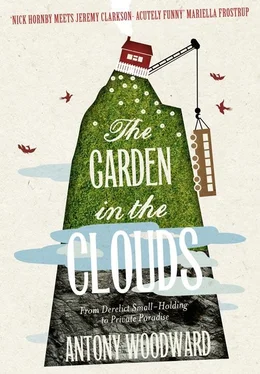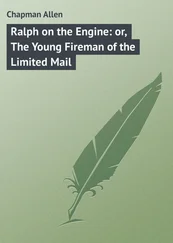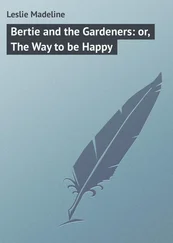1 ...6 7 8 10 11 12 ...17 So I suppose I was searching for an excuse to immerse myself in the place. The garden idea came about partly because of that. But it was partly, too, that we’d had it up to here with remarks masquerading as polite interest (‘How did you stumble on this place?’, ‘I can see it has great potential’) that we were perfectly aware translated as ‘What a dump!’ My father had made no secret of his bafflement, and Vez’s mum had watched with mortification as her daughter exchanged a successful career and a warm, clean house in London for a derelict shack up a mountain. True, some people ‘got’ it instantly, but many more did not. Why couldn’t they see it? Were its charms really so obscure? I’d recently visited Derek Jarman’s garden in Dungeness and been deeply impressed by the way he’d seen the beauty of that place, hitherto an isolated, little-known shingle headland in the shadow of a nuclear power station. Through his minute garden, hardly bigger than the fishing hut it adjoined, he’d shown that beauty to others too. It seemed to absorb its surrounding seascape and play it back in distilled form. Why couldn’t we try something similar at Tair-Ffynnon?
The idea was no doubt encouraged, as April turned to May, by the first tentative signs of spring’s arrival on the hill, in the form of a dishevelled swallow resting on the telephone wire. The following week, two dozen more had joined it, and the place had come alive with flitting, wheeling, diving, skimming birds playing tag around the house as they noisily nested in the barns. Our home, it seemed, was others’ too. A fortnight later the hedgerows on the lane turned white with May blossom and the shady verges exploded into a riot of bluebells, Lady’s Smock, violets, red campion, cow parsley, and a hundred other wild flowers I couldn’t identify. By this time the hills were echoing cacophonously with the joys of the season as lambs and their mothers bleated relentless inanities to one another.
The moment I latched onto the idea of a garden, it seemed right. It licensed me to spend as much time as I wanted thinking about the place, and it would force us into making a plan. This in turn would give us purpose and structure and provide a deadline. Maybe it would even help me understand why the place meant so much to me. Two further comments acted like rallying cries. One, from a visiting friend as he got out of the car: ‘God, there’s nothing that doesn’t need doing.’ The other, from Jonny, who when I mentioned the plan, hooted with derision: ‘A garden? What…at your place? You’re joking.’ Followed a few moments later by: ‘You are joking, aren’t you?’ At a stroke, a half-baked idea graduated into a clear personal challenge.
I’d heard of the National Gardens Scheme’s ‘yellow book’ and was vaguely aware of the yellow ‘Garden Open Today’ signs that sprouted across the countryside from around the time the clocks went forwards. I’d even thought that, one day, visiting such gardens was something I might like to do. Now, with my own garden in mind, it seemed as good a place as any to begin my research into what might be achievable. Might we be able to get into the National Gardens Scheme? I bought a copy of the book: a fat yellow paperback entitled Gardens of England and Wales Open for Charity . Its 500 pages were crammed with brisk little one-paragraph entries beneath addresses of scarcely believable quaintness: ‘Pikes Cottage, Hemyock’, ‘The Old Glebe, Eggesford’, ‘Mottisfont Abbey, Romsey’. * It was a remarkable collection. Here they all were: the cream of Britain’s secret gardens. Thousands of them (3,542 to be exact) with directions and opening dates: precise instructions on how to see, at the best possible moment, the pride and passion of some of the world’s most dedicated gardeners. Scanning the descriptions at first glance revealed many to be disconcertingly grand (‘60-acre deer park’, ‘Tudor knot garden’, ‘pleached lime avenue’, ‘Victorian fernery’), though there was also evidence of more modest attainments (‘pot patio’). There was no sign of Derek Jarman’s garden in the index, though endless other famous names were there: Sissinghurst, Hidcote, Stourhead, Newby Hall, Nymans, Bodnant. Was this the kind of thing we had a hope of getting into? And how on earth had such a scheme come about?

A little research revealed that the National Gardens Scheme was an institution that could have evolved nowhere but Britain. The inspiration arrived in 1926 at a committee meeting of the Queen’s Nursing Institute. In those pre-NHS days, the QNI was a charity that raised money to pay for district nurses and to provide for the retirement of existing ones. Ideas for fundraising were being batted to and fro before the steely gaze of the committee chairman, the Duke of Portland, when one of the committee members, a Miss Elsie Wagg, piped up. What a shame it was, she said, that Britain had so many marvellous gardens, yet most were seen by nobody except their owners and a few friends. Why not ask those owners to open for the appeal one day next year?
It was genius. If the idea could be implemented, here was a way to tap into one of Britain’s great hidden resources. But it was a big ‘if’, for the idea was presumptuous, impertinent, socially revolutionary even. Post-war Britain was still class bound. Garden-visiting was common enough, but only among a tiny minority. The thought of asking owners of large private houses to fling wide their wrought-iron gates to, well, anyone was outrageous. It smacked of Marxism, Leninism, Trotskyism or any of the otherisms which had been filling the papers recently. However, and this was the real genius, because the idea was to raise money for charity, and because it was approved by a duke, it looked mean-spirited to refuse. So suddenly, whether you were interested in gardens or just wanted a snoop behind the park wall, an irresistible opportunity presented itself. The Scheme licensed nosiness. It also sanctioned repressed British amateur gardeners to show off their efforts.
But what a feat of organisation. The idea lived or died by the contacts and persuasive powers of those setting up the Scheme. So, to be on the safe side, the first chairman of the new ‘National Gardens Scheme’ was a duchess (of Richmond and Gordon), who recruited a committee of well-connected county ladies, all with suitably fat little black books. And so was born the County Organiser: an imperious, horticultural version of the Pony Club’s District Commissioner.
As I read on about the history of the Scheme, a picture began to emerge of a type. A handful of retired senior servicemen notwithstanding, most were women with names like Daphne or Phyllida or Veronica, who soon became the grandes dames of the gardening world. The County Organiser tended to be someone who’d grown up within, and now kept, a large walled garden, the kind whose obituary—and County Organisers, it became clear, were the kind of people who got obituaries—said things like ‘could be impatient’, ‘fearsomely smocked and gaitered’, or ‘had a knack for engineering spectacular fallings-out, a process she thoroughly enjoyed’. She needed no reassurance about her place in the world, and had little time to spend reassuring those who did. As virtues, energy, efficiency and effectiveness took precedence over charm and humour; as a result, County Organisers were entirely immune to the latter. But in an imperial, ancien régime way, she Got Things Done. She was, in fact, my mother.
In 2002, to celebrate its seventy-fifth birthday, the NGS published a short history of the Scheme. There, on page 28, clustered around the Queen Mother on a staircase at St James’s Palace, fifty-four of these Lady Bracknells stare out from beneath their hats, with gimlet eyes and don’t-mess-with-me smiles—fifty-four iterations of the woman I knew best.
Читать дальше













